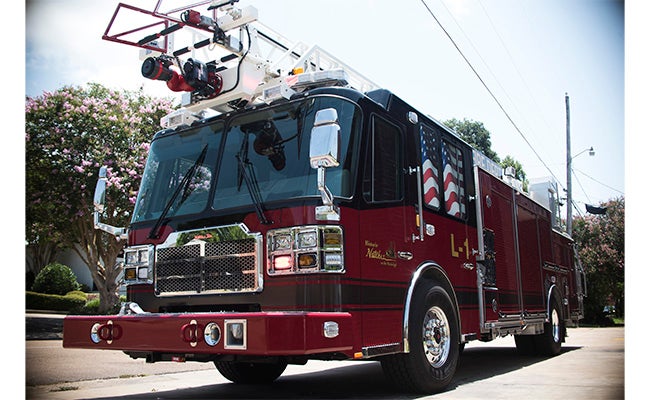Ready for the fight: Public invited to see city’s state-of-the-art fire truck
Published 12:16 am Saturday, July 6, 2019
NATCHEZ — City of Natchez officials will welcome the newest member of the Natchez Fire Department’s fleet with a dedication of a new fire truck starting at 9:30 a.m. during Tuesday’s regularly scheduled meeting of the Natchez Mayor and Board of Aldermen at the City Council Chambers.
The $1 million addition to the fire department’s equipment replaces the department’s 1991 model ladder truck.
The new truck is customized to act independently with its own pressure pump and hose without requiring a second vehicle to push water and douse the flames, said Ventris Green, Natchez fire chief.
“In the past, we required an additional truck to push water to the fire truck,” Green said. “Imagine having a fire hose without a hydrant.”
The truck with a pumper had been a requirement from the Mississippi State Rating Bureau in order for the city to maintain a 5 rating, said Darryl Grennell, Natchez mayor.
If the fire rating were to increase to a 6 on a scale of 1 to 10, the change could cost city residents more for their fire insurance, Grennell said.
The new truck, Grennell said, will be out for public viewing Tuesday while the Rev. Kenneth Stanton will offer a prayer of thanksgiving and request blessings for the new truck and for the Natchez Fire department and personnel.
“From what I understand, this is one of the state-of-the-art ladder trucks,” Grennell said. “With the pumping capacity that it has, we would be able to maintain and perhaps even improve the fire rating for the city. The fire chief and members of his department played a crucial role in making sure that this truck is equipped with everything that they need. … It is definitely an asset for this city in order to save future lives.”
The new truck, manufactured by Ferrara Fire Apparatus in Holden, Louisiana, was built and customized to fit the specific needs of the Natchez Fire Department and comes with helpful bells and whistles for emergency situations, Green said.
“Our older truck didn’t even have air conditioning,” Green said. “Fighting fires in 1,000 degrees and then riding in a truck with no air conditioning is just torture.”
Battalion Chief Robert Arrington said the compact design of the truck allows it to be maneuvered through tight alleys and streets and comes with two blind spot monitoring cameras, one at the left side and one on the rear of the truck.
The truck also has its own rescue equipment, such as cutters and a crowbar, stored in compartments on the side of the vehicle.
“If we need to use a Jaws of Life, we’d have them right here and ready instead of having to call Station 4,” Arrington said.
The older model truck had been designed to seat passenger firefighters around the truck’s engine, which cut them off from communication with the driver, Arrington said.
In contrast, the latest model has headsets built into the seats of the vehicle, allowing the driver and captain to relay instructions to the firefighters before they arrive on the scene and save time in situations where every second counts, Arrington said.
Other features include foam and water sprays, adjustable jacks for raising and lowering the truck and temperature cameras on the end of the ladder that displays hot spots on a digital screen.
The cameras allow firemen to detect the source of a flame and even victims who may be trapped inside, Green said.










